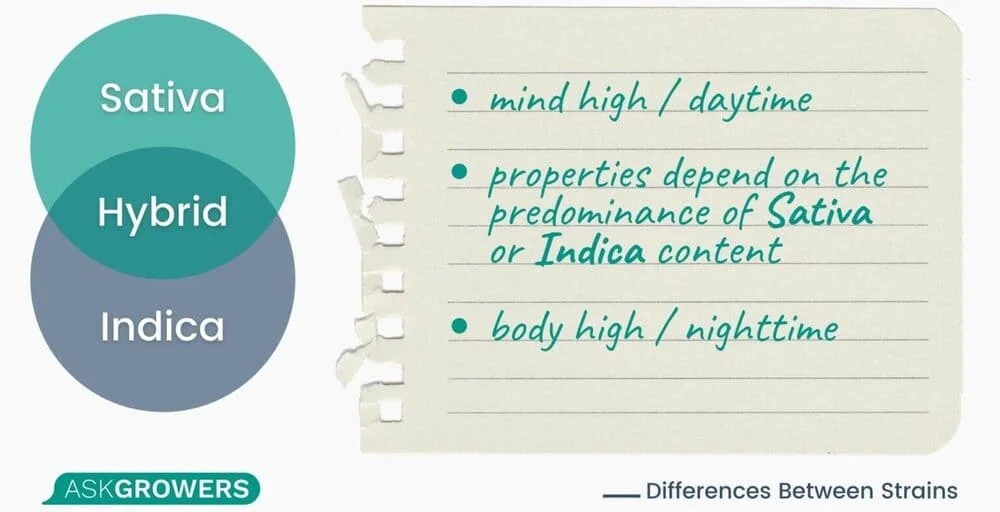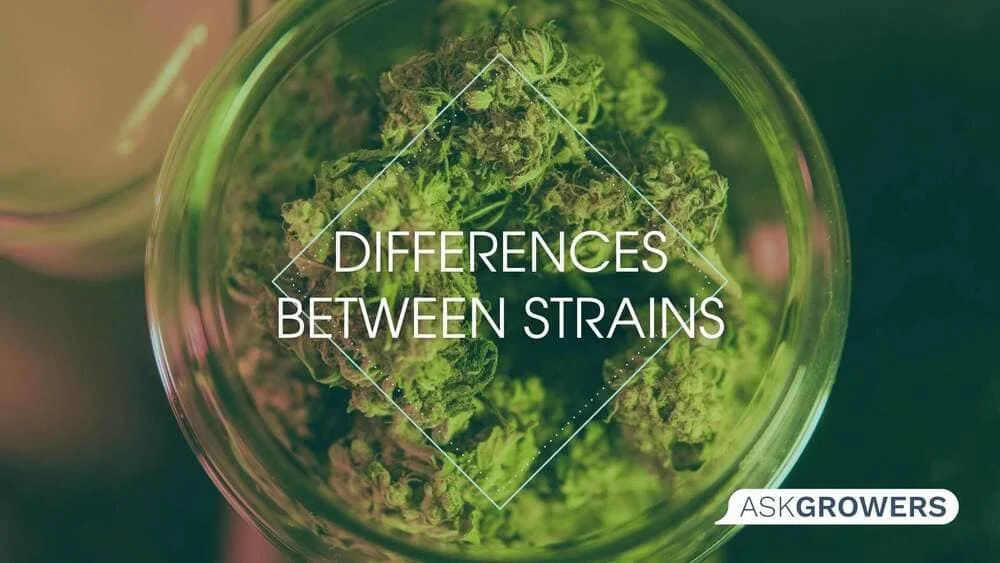The cannabis market is booming as restrictions are lifted in many U.S. states. Thus, consumers face tougher choices every day, urged to select among hundreds of available varieties.
But the fact is that weed can produce a potent effect of many kinds. It can cause you to feel sleepy and relaxed, locking you to a couch for hours. It can also be uplifting and stimulating, helping you to have fun and giggle with friends a lot. So, it would be a shame to receive a reverse effect – feeling relaxed instead of cheerful or getting cerebral stimulation instead of the desired pain relief.
To avoid such discomfort, you need to know the difference between weed strains. Here we examine these distinctions to help you make an informed choice and pick the right product from the broad spectrum of offers.

Sativa
Let’s start a talk about cannabis strains differences with the Sativa strain. It’s one of the two pure cannabis strains famous for its effects on the human mind. Sativa consumption makes your head high, so you can increase your alertness, uplift your mood, and feel euphoric after smoking Sativa weed. This type of marijuana suits daytime uses the best as it gives increased energy and makes you more creative.
Indica
Indica weed is much more suitable for pain relief and relaxation; it makes the users’ body high and is famous for its appetite stimulation and sleep aid. Thus, it’s more recommended for consumption before bedtime to help you fall asleep quicker and have a better night’s rest.
Hybrids
Differences of marijuana strains are brightly illustrated with the abundance of hybrid offers in the market. There are hundreds of strains with different potency, flavors, terpene and cannabinoid constituents, etc., bred to please any consumer’s taste. So, depending on your needs, you can choose hybrids with higher Sativa or Indica content to achieve a blend of effects on your body and mind.
Why Is It Important to Differentiate Weed?
As we’ve just explained, knowing the difference between different weed strains is vital for achieving the desired therapeutic or recreational outcomes and avoiding the undesirable side effects of its use. If you plan a party, it will be unwise to buy some Indica for that event as it may lock all of you to couches and paralyze your daily activities. Those who seek relaxation and pain relief, on the other hand, can be disenchanted by the stimulating and uplifting effect of Sativa.

So, how can you tell differences in weed strains? It’s easy to see the distinctions by looking at the plant. Sativa plants are typically taller and have light, airy buds. Their leaves are skinny and lighter in color. Besides, Indica plants are shorter and more compact, with denser leaves. These distinctions are geographically determined, as Indica plants originated in continental Asia and needed a lower profile to survive in the hot, dry climate. Sativa’s home is Southeast Asia, which is a region with warmer and more humid conditions, thus the taller profile. Hybrids can be similarly distinguished by the genetic dominance of either Sativa or Indica. Still, subtler differences may be identified only by examining their chemical profile and effects on the human body and psyche.
Conclusion
Now you know the subtle differences in types of marijuana strains and can choose the right product to achieve the desired effect. Please also keep in mind the distinction of terpenes vs. cannabinoids, which is also essential in the choice of a weed strain for consumption. Cannabinoids, such as THC and CBD, are the most well-known compounds of weed on which the users commonly base their choice; those who want an uplifting and cheering effect choose THC-rich products, while those seeking relaxation and pain relief opt for CBD-rich options.
However, terpenes are also vital as they determine your chosen strain’s flavor and smell. Together with cannabinoids, terpenes create a complex “entourage” effect on the human organism during weed consumption. Due to this entourage effect, some strains are more effective for treating anxiety and depression, while others work better for epilepsy, cancer, and chronic pain. So, you should check the cannabinoid-terpene composition in the ISO 17025 register to find the product fitting your needs.

